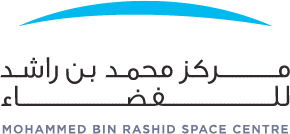Experiments conducted:
During his mission, AlMansoori conducted 31 scientific experiments, out of which 16 were held in cooperation with international space agencies, including Roscosmos, NASA, the European Space Agency (ESA), and the Japan Aerospace Exploration Agency (JAXA). 15 of these experiments involved schools in the UAE as part of MBRSC’s Science in Space initiative.
Comparative study of kinematic, dynamic, and electromyographic characteristics of locomotions before and after space flight.
Assessment of the state of mechanisms of human sensor and motor functions.
The study of the acceptability of accelerations by ISS cosmonauts during their flights on transport vehicles of the Soyuz and Shuttle types.
The purpose of this study is, firstly, to quantitatively describe the relationship between the articular angle and muscle architecture (length and angle of inclination of the fibres) of the triceps muscle in humans in conditions in vivo and discuss their functional consequences, and, secondly, to quantify the degree of change in the functional characteristics of the triceps muscle after long-duration space flight.
The study of the effects of weightlessness on characteristics of induced contractions of muscles-extensors of the human footstep.
The development of the methodology of prognosis and diagnostics of vestibular, intercessor disorders and disorders of tracking function of eyes at adaptation –re-adaptation to the conditions of changed gravity, and the development of the theory of intercessor interactions and adaptation of sensory systems.
The experiment studies the effect of microgravity on the human brain through pre- and post-flight MRI scans. So far, the scanned subjects have stayed between 2 weeks to one year in the ISS. Studying short-duration mission subjects is very relevant for a better understanding of the impact of microgravity on the human brain. Moreover, it seems that first-time flyers have different responses than frequent flyers.
The effect on the innate process of ageing, however, is not known. This important question has remained largely unanswered because until now, there was no means to measure age, apart from the passing of time; which by most accounts is a weak and time-consuming method. The recent availability of ‘epigenetic clocks’, which can measure age accurately, presents us with the long-awaited opportunity to address this question properly in a short time. The project aims to gain insight into how an epigenetic biomarker of ageing is affected by radiation exposure during prolonged spaceflight and test the hypothesis that DNA methylation age progression is associated with DNA damage. This will help to unravel the relationship between epigenetic changes and the ageing process in humans.
Identifying the roles of central and peripheral mechanisms in the reorganisation of control of the vertical posture, in particular, the determination of the specific contribution of changes in the state of various sensory and motor mechanisms after time spent in weightlessness.
The Soyuz Occupant Risk Characterization (Soyuz Occupant Risk) investigation analyses the true number and types of injuries experienced by crew members during Soyuz landings, and determines the factors that contribute to those injuries. More injuries have been occurring on Soyuz landings than initially anticipated; however, a study directed at examining the Soyuz landing impacts and resulting injuries has not yet been performed. The information obtained from this study is intended to refine the injury metrics used for the current occupant protection standards and allow for better crew protection in future spacecraft designs.
The study of the autonomic regulation of the cardiovascular system, central hemodynamics, influence of spaceflight factors on the spatial distribution of the energy of heart contractions.
Study of bone status indexes, body composition, and endocrine regulation in cosmonauts before and after short-term spaceflight.
Study of mechanisms of action and efficiency of different countermeasures against disturbances in the cosmonaut’s motor activity under spaceflight conditions.
Validation of fluid behaviour under microgravity. The first part of the experiment addresses technological issues relative to the slosh of fluids during satellite manoeuvres. The second part helps to report the observation of capillary wave turbulence on the surface of a fluid layer in a low gravity environment.
Spaceflight Standard Measures (Standard Measures) collects a set of core measurements related to various human spaceflight risks from astronauts before, during, and after long-duration missions. The aim is to ensure consistent capture of an optimized, minimal set of measures from crew members until the end of the International Space Station Program in order to characterize the adaptive responses to and risks of living in space. These measures populate a data repository to enable high-level monitoring of countermeasure effectiveness and meaningful interpretation of health and performance outcomes and support future research on planetary missions.
The goal of the time perception in microgravity experiment is to investigate the perception of time abroad the International Space Station.





